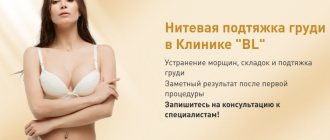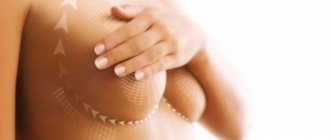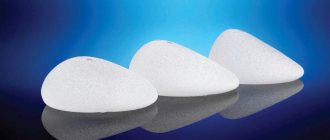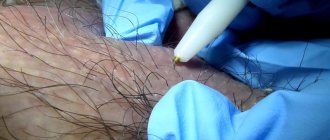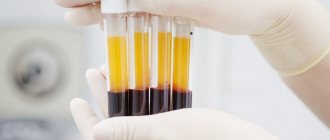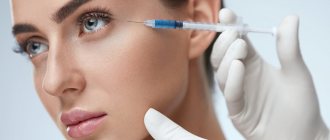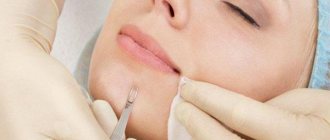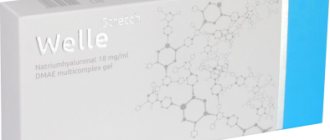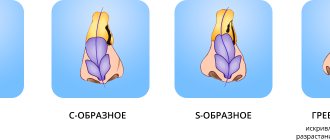In aesthetic surgery, there are two methods used to correct and improve the shape of the nose, as well as to eliminate breathing problems. These are rhinoplasty and septoplasty.
At the First Surgery clinic, both methods of surgical intervention on the nose are performed using the latest technologies and under the supervision of qualified surgeons. On the website 1surgery.ru you can not only see the price list and cost of the procedure, but also read reviews from clients who have undergone surgery.
Rhinoplasty is indicated for people over 18 years of age who have already formed the bones and cartilage of the nose. The upper recommended threshold for such an operation is forty years of age. After forty years, the recovery period is longer, and recovery is more difficult. Before the age of eighteen and after the age of forty, nose surgery is performed only to correct congenital defects or after injury.
Before undergoing surgery, you must follow the recommendations of your plastic surgeon. Ten days before surgery, you must refrain from cigarettes, alcoholic beverages, and taking medications that affect blood clotting. Rhinoplasty will be rescheduled or canceled if the patient has an exacerbation of diseases, diabetes mellitus, inflammation of the nose, or a woman’s menstrual period.
Although both methods are performed on the nose, rhinoplasty and septoplasty have differences in application.
Causes and consequences of a deviated septum
Deformations of the nasal septum are most often congenital and caused by genetic abnormalities. The problem is also caused by:
- nasal injuries (fractures, dislocations);
- the presence of cysts and polyps in the nasal cavity;
- swelling of the mucous membrane with vasomotor rhinitis;
- passion for fashionable procedures (piercing).
A deviated septum is dangerous due to many negative consequences - the inability to breathe freely, constant nasal congestion, deterioration of the sense of smell, dryness and itching, and nasal bleeding. If the cartilage is deformed, frequent colds, sinusitis, and headaches occur. Breathing becomes noisy, snoring appears at night.
If there is a deformed nasal septum, the body experiences oxygen starvation. This causes increased fatigue. Children with this disorder are prone to poor academic performance and retarded physical development. If the septum is deviated, the nostrils may differ in size.
Septoplasty and its types
Surgery to correct a deformed nasal septum is called septoplasty. It is performed by a doctor, a plastic surgeon.
It is based on a change in the bone or cartilaginous part of the septum. Plastic surgery is performed using special equipment or manually.
There are:
- Classic version;
- Endoscopic method;
- Laser method;
- Radio wave technique;
- Ultrasound septoplasty.
The classic method is to correct the deformed part of the nasal septum using a regular scalpel.
Contraindications for septoplasty
It is impossible to prevent a deviated septum. The only way to eliminate this pathology is septoplasty. There are no other methods to effectively solve the problem.
Septoplasty is a serious surgical procedure performed in different ways and requiring special preparation. The procedure has certain contraindications:
- the presence of tumors in the nose;
- diabetes;
- bleeding disorders;
- high blood pressure;
- exacerbation of chronic diseases.
The method is not used during pregnancy and menstruation in women. The operation is intended for adult patients and is therefore not performed on people under 18 years of age.
Contraindications for septoplasty
The operation before the age of 18 has a number of restrictions. If there are medical indications for plastic surgery, the operation is performed with the written consent of parents or official guardians.
It is prohibited to carry out correction using an invasive method in the presence of neoplasms of the nasal cavity. With such changes, there is a risk of heavy bleeding and tumor damage.
Septoplasty is contraindicated in acute diseases of the cardiovascular system, decompensated diabetes, infectious diseases in the acute stage and blood clotting disorders.
To identify contraindications, a full examination is carried out before surgery.
Preparation, progress of the operation
In order for the operation to be successful, the patient must prepare for it correctly:
- 2 weeks before septoplasty, stop taking blood thinners;
- completely eliminate smoking or reduce the bad habit to a minimum;
- undergo a medical examination, including blood tests, ECG, fluorography, examination by an otolaryngologist.
Correction of the nasal septum is carried out on an empty stomach, so 12 hours before septoplasty you need to exclude any food.
The progress of the operation depends on the method chosen to eliminate the defect. During the procedure, the doctor cuts the inner mucous membrane of the nose and straightens the septum. In most cases, all necessary actions are performed under local anesthesia, less often with general anesthesia.
What to do after surgery?
Following the recommendations of the observing specialist is the patient’s main task. Try not to miss both routine outpatient hygiene procedures and post-operative examinations with a doctor. Moreover, in most cases only 3-4 visits are necessary.
Limitations after septoplasty:
- Physical exercise.
- Sharp tilts and turns of the head.
- Elimination of temperature changes (bath, sauna, etc.).
- Air travel.
- Smoking and drinking alcohol.
- In the first days after surgery there is active nose blowing.
In the first week after surgery, for self-use, patients are recommended to:
- Nasal irrigation and lavage.
- Intranasal use of ointment applications.
- Use of vasoconstrictor drops.
- Short-term antibiotic therapy is possible, depending on the concomitant diagnosis.
Types of procedure
There are several options for septoplasty:
| Classical | Requires the use of a regular surgical scalpel. To prevent the cartilage from moving, a special mesh is placed on it, which dissolves over time. Sometimes the septum is removed and realigned and then put back in place. |
| Laser | It is carried out using a laser beam. The advantages of this technique are speed of operation, absence of bleeding and infectious complications, and accelerated rehabilitation. |
| Endoscopic | A special probe is inserted into the nasal cavity. All actions are filmed by a microscopic camera that displays the image on a monitor. The procedure requires the use of a scalpel, but is considered less traumatic than the classic method. |
| Ultrasonic | A modern type of operation using an ultrasonic knife. The technique allows you to quickly dissect the mucosa and seal the vessels without overheating the tissues. Ultrasound helps correct even the most severe deviated nasal septum. |
| Radio wave | The method combines the features of classical and laser septoplasty. The procedure eliminates the contact of the instrument with the organ, does not lead to injury or complications, and reliably seals the bone vessels. |
Correction of the nasal septum with a laser in Minsk is an effective and affordable option for surgery. Radio wave and ultrasound procedures are among the most expensive types of treatment.
Indications
Septoplasty, like any operation , has its own indications:
- Difficulty in nasal breathing;
- Diseases of the nose and paranasal sinuses;
- Visually noticeable curvature;
- Chronic rhinitis;
- Constant snoring or noisy breathing;
- Frequent nosebleeds.
Any of these reasons occurs when the nasal septum is of irregular shape. A doctor can confirm the diagnosis of a deviated nasal septum during examination.
He will conduct a detailed examination and prescribe a range of tests. If necessary, a consultation with an ENT doctor is scheduled.
The difference between septoplasty and rhinoplasty
Septoplasty is a medical procedure that is not intended to correct the appearance of the nose. In contrast, rhinoplasty is a plastic surgery performed for aesthetic purposes. If a patient with a deviated septum also wants to change the size and shape of the nose, these manipulations can be combined.
In such cases, rhinoplasty is performed first to improve appearance. At the next stage, septoplasty is performed, which straightens the septum and restores normal nasal breathing. If it was not possible to combine these operations, an interval of about 12 months is maintained between them.
Recovery period after the procedure
Rehabilitation after septoplasty can take place in a hospital setting or at home. If the intervention went well and there were no complications during the procedure, you can continue treatment at home.
If the course of the operation is complex or there is a high risk of developing negative reactions, the patient is left under observation in the clinic.
After the procedure, no matter where the person is, it is worth following certain rules.
Special turundas are placed in the patient's nasal passages. Special tubes are inserted into them. They help you breathe. Mucus and blood can accumulate in their lumen. Therefore, it is worth regularly sanitizing with saline solution.
The first days there is swelling and nasal congestion. To combat discomfort, I prescribe vasoconstrictor drugs, for example Xylometazoline. It can be used for up to 7 days. Longer use may cause addiction.
The patient's diet should consist of balanced foods. Avoid hot, spicy foods and increase fluid intake. After the procedure, this will help combat dry mouth. It is caused by a change in the way you breathe due to nasal congestion.
After the procedure, physical activity should be avoided.
This means 3 – 4 days after the manipulation. Further light walks in the fresh air are allowed. If the patient has been involved in any sports, it is worth abstaining from them for up to 2-3 weeks.
If there is a risk of infection, the doctor prescribes antibacterial drugs. The course of treatment lasts on average 5 – 7 days. The dosage is selected separately for each patient.
Features of rehabilitation
Septoplasty in Minsk is carried out in accordance with all modern requirements. Patients who undergo the procedure can return home the same day. A short stay in the hospital is required when the procedure was performed under general anesthesia or in the presence of complications.
After the operation you must:
- for several days, rinse the tubes that are inserted into the nasal cavity to facilitate breathing;
- temporarily exclude physical activity, going to saunas, swimming pools, baths;
- refrain from natural or artificial tanning;
- sleep only on your back or side;
- follow a diet that includes avoiding hot, cold, spicy, and alcoholic drinks.
If the patient is bothered by pain, anesthetics are prescribed. To relieve severe inflammation or prevent its development, you may need to take antibiotics. To make breathing through the nose easier, drops are often used to relieve swelling.
Septoplasty: let's weigh all the pros and cons of the operation
Septoplasty is an operation to correct the position of the nasal septum.
Types of surgery
Depending on the method of surgical access, the following types of septoplasty are divided:
- Ultrasonic. Recommended for C-shaped curvature.
- Radio wave. Surgitron straightens the curvature without affecting the cartilage and bone tissue.
- Classic. It is characterized by the removal of bone curvature with the removal of cartilage. At the end of the procedure, a plate is installed that fixes the desired position.
Often the tip of the nose becomes drooping. The downside is a lot of blood loss.
- Endoscopic. Can be combined with laser techniques or performed separately. For medical reasons, it is used with vasotomy. Using an endoscope, reimplantation of autocartilage is performed, i.e. the bone is corrected with the preliminary removal of cartilage and its subsequent restoration.
- Laser. Only the cartilage is removed (septochondrocorrection) or cartilage with bone. In this case, local anesthesia is used.
Today, laser and endoscopic septoplasty are actively practiced. The comparative characteristics of the two procedures are as follows:
| Laser | Endoscope | |
| Blood loss | Reduced to zero | Available |
| Restoring breathing | 2-3 days | 5-7 days |
| Use of seams | The wound is not stitched | Stitches at the bottom of the nasal passages |
| Risk of complications | Minimal | There is a possibility of infection |
| Anesthesia | Local | Local or combined |
| Correction of S and C-shaped curvature | Doesn't cope with S curve | Suitable for any type |
| Swelling | No | Eat |
Indications and contraindications
80% of the population has a deviated nasal septum. However, this does not mean that surgery is needed. The following symptoms may be a reason to contact a plastic surgeon:
- Chronic sinusitis, rhinitis, otitis.
- Periodic headache.
- Partial or complete loss of smell.
- Difficulty breathing due to nasal congestion.
- Snoring and apnea.
- Bleeding from the nose.
- Visible deformation of the septum.
- Narrowing of the nasal passages.
The restrictions for septoplasty are standard and do not differ from other types of operations.
Progress of the operation
Septoplasty is performed as follows:
- The doctor dissects the soft tissue in the nasal passages and peels them off.
- If necessary, cartilage is removed.
- Crooked bone structures are removed and the cartilage and bone are repositioned symmetrically.
- If the cartilage was resected, it is reimplanted back.
- Sutures are placed with biodegradable material.
- A bactericidal swab is placed in each nostril.
- A tight bandage is applied.
Rehabilitation
The patient is under medical supervision for 2-3 days. The total recovery time after surgery takes about three months. After this time, the result of the plastic surgery can be assessed.
The postoperative period proceeds as follows:
Special air intake tubes are placed in the nasal passages to help facilitate breathing, and tampons are placed to absorb secreted fluid and blood. In addition, the nose is fixed with splints, plates and a bandage, which hold the bone tissue and cartilage in the desired position. Immediately after the procedure, it is forbidden to drink water. If the pain threshold is severe, analgesics are prescribed.
The recovery period takes place at home, but you should definitely visit a doctor every three days. During this time, the patient should:
- Treat the mucous membrane with saline solution several times a day. For example, Aqualor, Dolphin. They relieve swelling, help remove mucus, and prevent the development of infection.
- Clean the cavity from blood clots.
- Remove crusts. You should not perform this procedure with your fingers. For this purpose, cotton swabs are used.
- Lubricate the mucous membrane with ointments. The doctor prescribes the right remedy to reduce dryness and reduce the number of cracks.
After 10 days, swelling is relieved, and after 5 days, respiratory function is partially normalized.
General requirements that must be met:
- Wash with cold water.
- Measure your body temperature three times a day. The normal value is up to 37.8°C.
- Apply a cold compress several times a day.
- Monitor the hydration of the mucous membrane.
- Sleep only in a half-sitting position, placing several pillows under your head.
The main prohibitions during rehabilitation:
- Do not use vasoconstrictor drops or sprays.
- Do not eat very hot food.
- Do not blow your nose or touch your nasal passages with your hands.
- Do not visit the bathhouse, solarium or other places exposed to heat.
- Don't tilt your head down.
- Don't play sports.
- Don't wear glasses.
- Don't sneeze with your mouth closed.
Complications
After septoplasty, there is a low likelihood of developing some side effects. They are mainly associated with non-compliance with doctor's recommendations in the postoperative period.
Standard symptoms after nasal septum surgery are bleeding, increased body temperature, and pain. In addition, swelling appears. Its severity is noticeable during the first seven days, then it decreases over the course of a month. To reduce the appearance of swelling, you should apply a cold compress, use vasoconstrictors, and humidify the air in the room.
Among the negative phenomena it should be noted:
- Hematomas. Occurs due to damage to blood vessels. As a rule, it goes away on its own.
- Scarring of the nasal septum.
- Infection due to improper treatment of the nasal passages.
- Reduced or complete loss of sensitivity of the skin of the nose as a result of nerve damage.
- Damage to the mucous layer of the epithelium.
- Dry throat and nose.
- Change in color of the epidermis.
More serious difficulties after surgery include:
- Perforation of the nasal septum wall. Expressed as a whistling sound when breathing.
- Purulent sinusitis. It manifests itself as acute pain, stuffy ears, dizziness, and increased body temperature. The cause is insufficient drainage, insufficient rinsing of the sinuses, and wound infection. Antibacterial therapy is necessary.
- Inflammation of the cartilaginous area.
- Accumulation of fluid in the nasal cavity.
- Repeated obstruction. This problem requires repeated plastic surgery.
- Damage to the internal valve. This group includes such difficulties as severe narrowing of cartilage tissue, narrowing of the arch of the bone, narrowing of the wings of the nose. A headache, dry throat appears, and breathing becomes more difficult. In this case, a secondary operation is needed.
- Fusion of the walls of the nasal cavity. The bridges make it difficult for air to pass through. Dry mouth, snoring, and voice changes appear. It can be removed surgically. After the procedure, splints are installed to prevent the reappearance of the strands.
Laser technology reduces the likelihood of complications.
Factors that increase the occurrence of negative phenomena are performing surgery with existing contraindications, failure to maintain sterility during processing, taking prohibiting medications, early physical activity, and low blood clotting.
What complications may arise
If the correction of the nasal septum was carried out with violations, there was improper preparation, or the patient did not comply with the rules of rehabilitation, the risk of complications increases:
- septal perforation;
- nasal bleeding;
- formation of adhesions;
- development of the inflammatory process;
- the appearance of hematomas.
The rarest type of complications is a decrease in the sensitivity of the skin of the nose or its complete loss. This phenomenon is caused by damage to the nerve endings. In some cases, normal sensitivity is restored after 2-3 weeks, in others it takes several years.
Preparation for the procedure
Before surgery begins, the patient undergoes a series of examinations.
They include laboratory tests, radiography in three projections, ECG and fluorography. This allows the doctor to navigate the method of nasal septum correction and the method of anesthesia.
5-7 days before the procedure, you should avoid drinking alcohol. Reduce the number of cigarettes you smoke or quit smoking. Doctors advise stopping taking non-steroidal painkillers and blood thinners.
If this is difficult, you need to inform a specialist about this.
Immediately before surgery, you should not consume food or water. Correction of the nasal septum is performed on an empty stomach.
